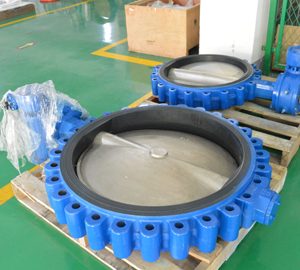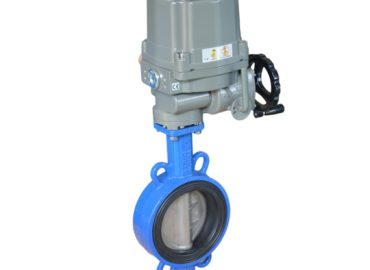Butterfly valves are versatile and widely used components in various fluid flow control systems across numerous industries, ranging from water treatment to petrochemical processing. A thorough understanding of the major components that make up a butterfly valve is essential for engineers and technicians involved in valve selection, installation, and maintenance. This knowledge helps ensure optimal performance, reliability, and longevity of the valve within the system. In this article, we will explore the common names used for the major components of a butterfly valve, delving into their functions, types, and material options, ultimately providing a comprehensive guide for those working with these crucial flow control devices.
Introduction
Butterfly valves, which are widely utilized in various fluid flow control systems across numerous industries, consist of several major components that work in tandem to regulate the flow of liquids or gases. These components include the valve body, a robust housing that encases and supports the internal parts of the valve; the valve disc, a circular plate that rotates around a central axis to control the flow; the valve stem, a slender rod that connects the disc to the actuator and facilitates the rotation of the disc; seals and gaskets, which create a tight barrier at the valve’s interface to prevent leakage; the actuator, a device that translates an input signal into mechanical motion to open or close the valve; bearings and bushings, which reduce friction and wear between the rotating stem and stationary components; and various accessories such as positioners, limit switches, solenoid valves, and manual overrides that further enhance the valve’s functionality and control capabilities. Each of these components comes in different types, designs, and material options, allowing for customization according to specific application requirements. By understanding the common names used for these major components, as well as their functions and variations, engineers and technicians can make informed decisions when selecting, installing, and maintaining butterfly valves, ensuring optimal performance and reliability within their fluid flow control systems.
Brief overview of butterfly valves and their applications
Butterfly valves are a popular type of quarter-turn valve widely used for regulating and isolating the flow of fluids in various industries. They consist of a disc mounted on a rotating stem, which enables quick and efficient control of fluid flow with minimal pressure drop. Butterfly valves are known for their compact design, ease of operation, and cost-effectiveness, making them suitable for a diverse range of applications. Some common industries that utilize butterfly valves include water and wastewater treatment, food and beverage processing, chemical and petrochemical plants, oil and gas pipelines, and HVAC systems. Due to their adaptability and versatility, butterfly valves play a crucial role in ensuring the smooth operation of fluid flow control systems across numerous sectors.

Importance of understanding the major components of a butterfly valve
The importance of understanding the major components of a butterfly valve lies in its ability to aid engineers and technicians in making informed decisions during valve selection, installation, and maintenance processes. Familiarity with these components, such as the valve body, disc, stem, seals, gaskets, actuator, bearings, bushings, and additional accessories, enables professionals to choose the most suitable valve configuration for specific applications, ensuring optimal performance, reliability, and longevity. Furthermore, this knowledge helps identify potential issues during the installation process, preventing future malfunctions or costly downtime. It also assists in recognizing signs of wear or damage during routine maintenance checks, allowing for timely repairs or replacements. Ultimately, comprehending the major components of a butterfly valve is essential for maximizing the efficiency and effectiveness of fluid flow control systems across various industrial and commercial settings.

Valve Body
The valve body is a crucial component of a butterfly valve, serving as the outer casing that houses and supports the internal parts of the valve, such as the disc, stem, and seals. It is designed to withstand the pressure and temperature of the fluid flowing through the valve while maintaining a leak-proof connection with the adjoining pipe system. Valve bodies come in various styles, including wafer, lug, and flanged types, each with their own advantages and applications. Wafer-style valve bodies are typically lightweight, economical, and sandwiched between two flanges in the pipeline, making them ideal for low pressure and tight-space installations. Lug-style valve bodies, on the other hand, feature threaded inserts and can be installed into the pipe system using bolts, allowing for easy removal and maintenance without disrupting the entire pipeline. Flanged valve bodies are characterized by their raised face or flat face flanges, which are bolted to the mating flanges of the pipe system, providing a more robust connection suitable for high-pressure applications. Additionally, valve bodies can be constructed from a variety of materials, such as cast iron, ductile iron, stainless steel, and plastic, depending on the specific requirements and corrosiveness of the fluid being handled. Understanding the different types and material options of valve bodies is essential for selecting the most appropriate butterfly valve configuration to ensure optimal performance, durability, and compatibility with the intended application.
Description and function
The primary function of a butterfly valve is to regulate and isolate fluid flow in various industrial and commercial systems. It achieves this through the use of its main components, which include the valve body, disc, stem, seals, and actuator. The valve body serves as the outer casing that houses and supports the internal elements while providing a leak-proof connection with the pipeline. The disc, positioned within the body, is a circular plate that rotates around a central axis to control the flow of fluid. The stem connects the disc to the actuator, enabling the disc’s rotation and facilitating the opening and closing of the valve. Seals and gaskets create a tight barrier at the valve’s interface, preventing fluid leakage and ensuring efficient flow control. The actuator translates input signals into mechanical motion, allowing for precise and responsive operation of the valve. Each of these components plays a critical role in the overall functionality of a butterfly valve, making it essential for engineers and technicians to understand their descriptions and functions to ensure proper valve selection, installation, and maintenance.
Types of valve bodies (e.g., wafer, lug, flanged)
Valve bodies, a fundamental component of wafer butterfly valves, come in various types to suit specific applications and installation requirements. The three primary types of valve bodies include wafer, lug, and flanged. Wafer-style valve bodies are compact and lightweight, making them an economical choice for low-pressure systems and tight-space installations. They are sandwiched between two flanges in the pipeline, held in place by the bolt tension from the adjoining flanges. Lug-style valve bodies feature threaded inserts that allow them to be bolted directly onto the pipe system. This design enables easy removal and maintenance of the valve without disrupting the entire pipeline, making lug-style valves suitable for dead-end service and bidirectional flow applications. Flanged valve bodies, characterized by their raised face or flat face flanges, offer a more robust connection for high-pressure applications. They are bolted to the mating flanges of the pipe system, providing a secure and reliable seal. Understanding the differences between these valve body types is essential for selecting the most appropriate butterfly valve configuration, ensuring optimal performance and compatibility with the intended application.
Material options
Material options for butterfly valves play a significant role in determining their suitability for specific applications, as they directly affect the valve’s performance, durability, and resistance to corrosion. Common materials used in the construction of valve components include cast iron, ductile iron, stainless steel, bronze, and various plastics. Cast iron and ductile iron are popular choices for valve bodies due to their strength, durability, and cost-effectiveness, making them suitable for a wide range of applications, including water and wastewater treatment systems. Stainless steel, known for its excellent corrosion resistance, is often used for valve components in industries like food and beverage processing, chemical, and pharmaceutical, where sanitary conditions and resistance to aggressive media are critical. Bronze, another corrosion-resistant option, is frequently used in marine and seawater applications due to its ability to withstand saltwater environments. Plastic materials, such as PVC, CPVC, and polypropylene, offer lightweight, corrosion-resistant, and cost-effective alternatives for applications involving low-pressure systems and less aggressive media. Ultimately, selecting the appropriate material for a butterfly valve depends on factors such as fluid type, pressure, temperature, and environmental conditions, ensuring optimal performance and longevity in the intended application.
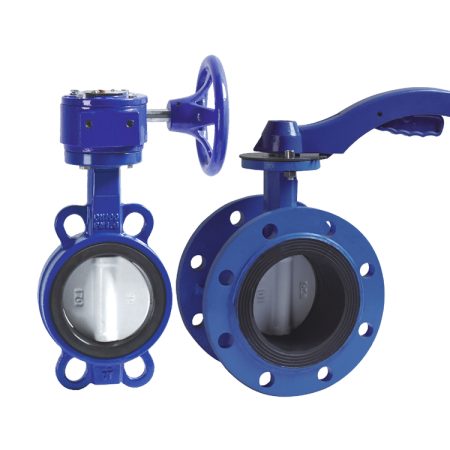
Valve Disc
The valve disc is an integral component of a butterfly valve, responsible for controlling the flow of fluid through the pipeline. It is a circular plate mounted on a rotating stem and positioned within the valve body. When the disc rotates around its central axis, it either allows or restricts the flow of fluid, making it a crucial element in regulating and isolating fluid flow in various industrial and commercial systems. The design of the valve disc can vary depending on the application and desired flow characteristics. Some common disc designs include concentric, double-offset, and triple-offset. Concentric discs have their center of rotation aligned with the center of the pipeline, providing a tight seal when closed but may experience increased wear due to contact with the seat. Double-offset discs have their center of rotation slightly offset from the pipeline center, reducing contact between the disc and seat, which results in less wear and improved sealing performance. Triple-offset discs feature an additional offset in the geometry of the sealing surface, further minimizing contact and wear while providing a more reliable, bubble-tight seal. Valve discs can be constructed from a variety of materials, such as stainless steel, ductile iron, or bronze, depending on the specific requirements and corrosiveness of the fluid being handled. Understanding the different disc designs and material options is essential for selecting the most appropriate butterfly valve configuration to ensure optimal performance, durability, and compatibility with the intended application.
Description and function
The description and function of a butterfly valve pertain to its role in regulating and isolating fluid flow within various industrial and commercial systems. A butterfly valve consists of key components, including the valve body, disc, stem, seals, and actuator. The valve body serves as the outer casing, housing the internal parts and providing a leak-proof connection with the pipeline. The disc, a circular plate mounted on a rotating stem, is the primary component controlling fluid flow. When the disc rotates, it either opens or closes the passage for fluid, allowing for precise flow regulation. The stem connects the disc to the actuator, enabling the valve’s opening and closing functionality. Seals and gaskets create a tight barrier at the valve’s interface, preventing fluid leakage and ensuring efficient flow control. Lastly, the actuator translates input signals into mechanical motion, facilitating accurate and responsive operation of the valve. Each component plays a critical role in the overall functionality of a butterfly valve, highlighting the importance of understanding their descriptions and functions for proper valve selection, installation, and maintenance.
Types of discs (e.g., concentric, double offset, triple offset)
The types of discs used in butterfly valves directly impact their sealing performance, wear resistance, and suitability for specific applications. There are three primary disc designs: concentric, double-offset, and triple-offset. Concentric discs have their center of rotation aligned with the center of the pipeline, offering a simplistic design and cost-effective option. However, they may experience increased wear due to constant contact with the seat during operation. Double-offset discs feature an offset center of rotation from the pipeline center, which reduces contact between the disc and seat, resulting in decreased wear and improved sealing performance. This design is particularly suitable for applications requiring higher pressure and temperature tolerances. Triple-offset discs incorporate an additional offset in the geometry of the sealing surface, further minimizing contact and wear while providing a more reliable, bubble-tight seal. Triple-offset butterfly valves are often used in critical applications, such as high-pressure steam systems or cryogenic services, where a dependable, leak-free seal is essential. Understanding the different disc designs is crucial for selecting the most appropriate butterfly valve configuration to ensure optimal performance, durability, and compatibility with the intended application.
Material options
Material options play a crucial role in determining the suitability, durability, and performance of components in various industrial and commercial applications, including valves, pipes, and fittings. The selection of appropriate materials depends on factors such as the type of fluid being transported, operating temperatures and pressures, and the potential for corrosion or chemical reactions. Common material options for valve components include stainless steel, ductile iron, brass, bronze, and various plastic polymers. Stainless steel is widely used for its strength, resistance to corrosion, and compatibility with a wide range of fluids, making it a versatile option for many industries. Ductile iron offers excellent tensile strength and durability, often utilized in water and wastewater treatment applications. Brass and bronze provide good corrosion resistance and are frequently employed in plumbing systems and low-pressure fluid control applications. Plastic polymers, such as PVC, CPVC, and PTFE, offer lightweight, corrosion-resistant solutions for handling aggressive chemicals and corrosive environments. Understanding the different material options and their properties is essential for selecting the most appropriate components to ensure optimal performance, longevity, and compatibility with the intended application.
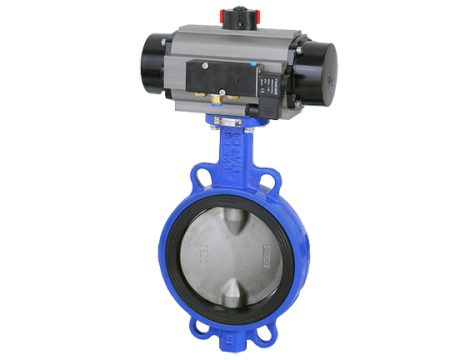
Valve Stem
The valve stem is a critical component in the functionality and operation of various types of valves, including butterfly, ball, and gate valves. Acting as the connecting element between the valve’s actuator and internal components, the stem is responsible for translating the actuator’s input into the required motion to open or close the valve, thereby controlling fluid flow within a pipeline or system. Valve stems are typically constructed from materials such as stainless steel, brass, or bronze, chosen for their strength, corrosion resistance, and compatibility with the specific application’s requirements. The design of the valve stem varies depending on the type of valve; for instance, in butterfly valves, the stem runs through the center of the disc, while in ball valves, the stem connects to the top of the ball. Additionally, some valve stems are designed as rising stems, which visibly rise and lower as the valve operates, providing a clear indication of the valve’s position.
To ensure proper sealing and prevent leakage, valve stems are equipped with packing or seals, such as O-rings or graphite packing, which create a tight barrier around the stem where it passes through the valve body. The choice of packing material depends on factors like temperature, pressure, and the fluid being handled. Maintaining the integrity of the stem seal is crucial, as it minimizes the risk of fugitive emissions and ensures the efficient operation of the valve.
Valve stem durability and reliability are paramount, as any failure or malfunction can lead to severe consequences, such as loss of process control, leakage, or even environmental and safety hazards. To ensure the optimal performance and longevity of valve stems, regular inspection, maintenance, and, when necessary, replacement of worn or damaged components is essential. Furthermore, selecting the appropriate valve stem material, design, and sealing system based on the specific application’s requirements is critical in ensuring the valve’s overall functionality, efficiency, and safety.
Description and function
A description and function of a component or system are essential aspects that enable a comprehensive understanding of its purpose, operation, and potential applications. A description provides a detailed overview of the physical attributes, design, and materials used, while the function explains the intended role or purpose the component or system serves within a larger context. For instance, in the case of a valve, the description would cover aspects such as the valve type, material composition, size, and connection method, whereas the function would explain how the valve controls fluid flow by opening, closing, or regulating the passage of fluids through a pipeline. By combining both the description and function, users can gain valuable insight into the suitability, compatibility, and performance expectations of a given component or system, enabling informed decision-making and efficient integration within the intended application. Additionally, understanding the description and function is vital for proper installation, operation, and maintenance, ensuring optimal performance and longevity of the component or system.
Stem types (e.g., one-piece, two-piece, blowout-proof)
Valve stem types play a significant role in determining the functionality, reliability, and safety of valve operation. Common stem types include one-piece, two-piece, and blowout-proof stems, each with its distinct characteristics and applications. One-piece stems are manufactured from a single piece of material, providing a simple and robust design that ensures consistent alignment between the actuator and the valve’s internal components. This type is commonly used in smaller valves where simplicity and compactness are desirable features. Two-piece stems, as the name suggests, consist of two separate pieces connected to facilitate assembly or disassembly, allowing for easier maintenance and reduced downtime. While offering greater flexibility, two-piece stems may be more prone to misalignment or wear over time due to the joint between the two parts.
Blowout-proof stems are specifically designed to enhance safety and prevent the stem from being ejected from the valve body under high-pressure conditions. This design incorporates a shoulder or retaining ring that prevents the stem from dislodging, even if the internal pressure exceeds the valve’s rated capacity. Blowout-proof stems are particularly important in applications where high-pressure fluids or gases are present, as they minimize the risk of accidents and damage to equipment.Selecting the appropriate stem type for a given valve depends on factors such as the operating environment, pressure and temperature conditions, and maintenance requirements. By understanding the advantages and limitations of each stem type, users can make informed decisions that ensure optimal valve performance, reliability, and safety in their specific application.
Material options
Material options play a crucial role in determining the suitability, durability, and performance of components in various industrial and commercial applications, including valves, pipes, and fittings. The selection of appropriate materials depends on factors such as the type of fluid being transported, operating temperatures and pressures, and the potential for corrosion or chemical reactions. Common material options for valve components include stainless steel, ductile iron, brass, bronze, and various plastic polymers. Stainless steel is widely used for its strength, resistance to corrosion, and compatibility with a wide range of fluids, making it a versatile option for many industries. Ductile iron offers excellent tensile strength and durability, often utilized in water and wastewater treatment applications. Brass and bronze provide good corrosion resistance and are frequently employed in plumbing systems and low-pressure fluid control applications. Plastic polymers, such as PVC, CPVC, and PTFE, offer lightweight, corrosion-resistant solutions for handling aggressive chemicals and corrosive environments. Understanding the different material options and their properties is essential for selecting the most appropriate components to ensure optimal performance, longevity, and compatibility with the intended application.
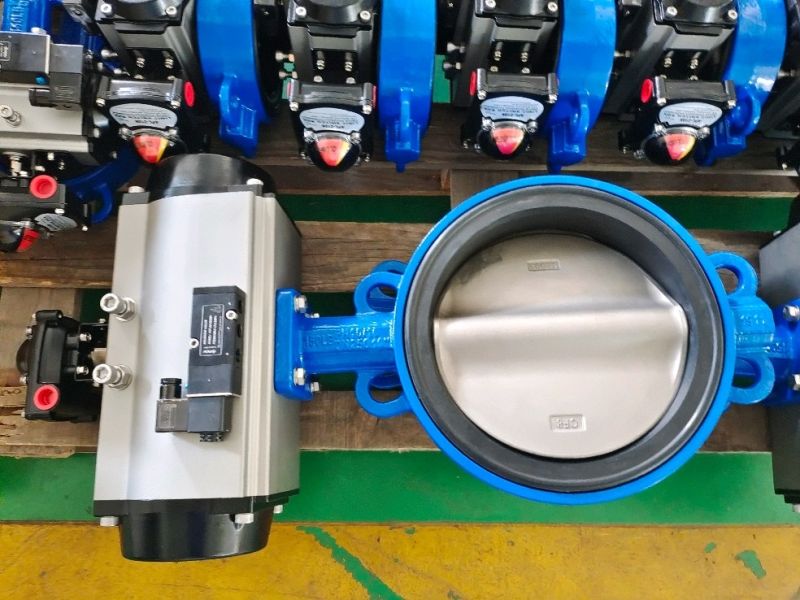
Seals and Gaskets
Seals and gaskets play a vital role in maintaining the integrity and efficiency of various industrial and commercial systems, serving as critical components that prevent fluid leaks and ensure proper sealing between mating surfaces. These components can be found in numerous applications, including valves, pumps, pipelines, and machinery, where they help maintain pressure, protect against contamination, and enhance overall system performance. Seals and gaskets are available in a wide range of materials, such as rubber, silicone, polytetrafluoroethylene (PTFE), and graphite, each offering unique properties that cater to specific requirements, like temperature resistance, chemical compatibility, and mechanical strength. The selection of appropriate seal or gasket material depends on factors such as the type of fluid being transported, operating temperatures and pressures, and potential exposure to corrosive or abrasive substances. Proper installation and maintenance of seals and gaskets are essential to ensure their longevity and effectiveness in preventing leaks, mitigating the risk of equipment damage, and minimizing downtime. By understanding the various types of seals and gaskets available and their respective properties, users can make informed decisions that contribute to the optimal performance, reliability, and safety of their systems and equipment.
Description and function
A description and function of a component or system are essential aspects that enable a comprehensive understanding of its purpose, operation, and potential applications. A description provides a detailed overview of the physical attributes, design, and materials used, while the function explains the intended role or purpose the component or system serves within a larger context. For instance, in the case of a valve, the description would cover aspects such as the valve type, material composition, size, and connection method, whereas the function would explain how the valve controls fluid flow by opening, closing, or regulating the passage of fluids through a pipeline. By combining both the description and function, users can gain valuable insight into the suitability, compatibility, and performance expectations of a given component or system, enabling informed decision-making and efficient integration within the intended application. Additionally, understanding the description and function is vital for proper installation, operation, and maintenance, ensuring optimal performance and longevity of the component or system.
Types of seals (e.g., elastomeric, PTFE, metal-to-metal)
Types of seals are diverse and cater to various industrial and commercial applications, each offering unique properties and benefits for specific requirements. Common types of seals include elastomeric, PTFE, and metal-to-metal seals, each designed to address different challenges in sealing and performance. Elastomeric seals, made from materials like rubber, silicone, or Viton, are known for their flexibility, resilience, and ability to conform to irregular surfaces, providing excellent sealing capabilities across a wide range of temperatures and pressures. These seals are commonly used in hydraulic and pneumatic systems, as well as in fluid transport applications.
PTFE (polytetrafluoroethylene) seals, often referred to as Teflon seals, offer exceptional chemical resistance, low friction, and high-temperature tolerance. This makes them ideal for use in applications involving aggressive chemicals, corrosive environments, or where minimal wear and long service life are essential, such as in chemical processing, food and beverage, or pharmaceutical industries.
Metal-to-metal seals, on the other hand, provide a robust and durable sealing solution, capable of withstanding extreme temperatures and high-pressure conditions. These seals rely on the deformation of metal surfaces to create a tight seal, often employing specialized coatings or surface treatments to enhance sealing performance and reduce the risk of galling or damage. Metal-to-metal seals are commonly found in aerospace, oil and gas, and power generation applications, where reliability and performance under harsh conditions are paramount.Understanding the various types of seals and their respective properties is crucial for selecting the appropriate sealing solution that ensures optimal performance, longevity, and compatibility with the intended application.
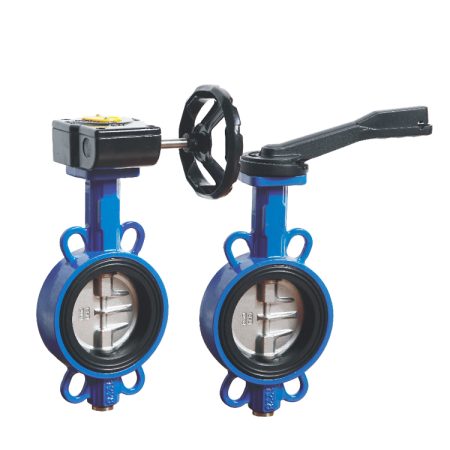
Material options
Material options play a crucial role in determining the suitability, durability, and performance of components in various industrial and commercial applications, including valves, pipes, and fittings. The selection of appropriate materials depends on factors such as the type of fluid being transported, operating temperatures and pressures, and the potential for corrosion or chemical reactions. Common material options for valve components include stainless steel, ductile iron, brass, bronze, and various plastic polymers. Stainless steel is widely used for its strength, resistance to corrosion, and compatibility with a wide range of fluids, making it a versatile option for many industries. Ductile iron offers excellent tensile strength and durability, often utilized in water and wastewater treatment applications. Brass and bronze provide good corrosion resistance and are frequently employed in plumbing systems and low-pressure fluid control applications. Plastic polymers, such as PVC, CPVC, and PTFE, offer lightweight, corrosion-resistant solutions for handling aggressive chemicals and corrosive environments. Understanding the different material options and their properties is essential for selecting the most appropriate components to ensure optimal performance, longevity, and compatibility with the intended application.
Actuator
An actuator is a critical component in various industrial and commercial systems, responsible for converting energy, typically in the form of electrical, hydraulic, or pneumatic signals, into mechanical motion to control or manipulate processes. Actuators play an essential role in the operation of valves, pumps, dampers, and other equipment, enabling precise control over fluid flow, pressure regulation, and positioning tasks. Available in a wide range of designs, sizes, and power capacities, actuators cater to diverse application requirements and operational environments, such as temperature extremes, corrosive atmospheres, and hazardous locations. Common types of actuators include electric, hydraulic, and pneumatic actuators, each offering unique benefits and limitations based on their working principles and construction.
Electric actuators utilize electric motors, gears, and switches to generate rotational or linear motion, providing accurate, reliable, and energy-efficient control with relatively low maintenance requirements. They are often employed in applications where precision positioning and remote control capabilities are vital, such as process automation, water treatment, and HVAC systems. Hydraulic actuators, on the other hand, rely on the pressurized flow of fluids, usually oil, to generate force and motion. These actuators offer high power-to-weight ratios and excellent load-carrying capacity, making them suitable for heavy-duty applications like construction machinery, industrial equipment, and large valve operations.
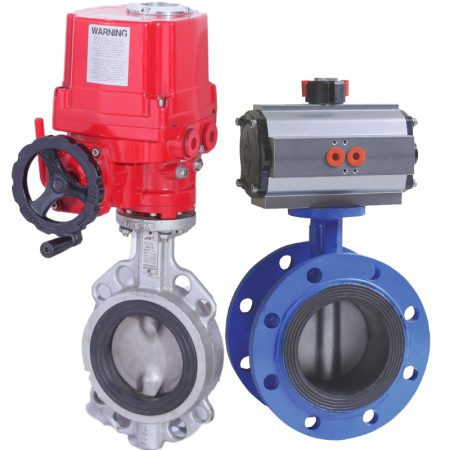
Pneumatic actuators utilize compressed air to create mechanical motion, offering fast response times, simplicity of design, and inherent safety in explosive or flammable environments due to the absence of sparks or heat generation. These actuators are commonly found in manufacturing, automotive, and oil and gas industries, where rapid actuation and fail-safe functionality are crucial. The selection of the appropriate actuator type depends on factors such as the required force, speed, precision, and environmental conditions, as well as energy availability and cost considerations. By understanding the various actuator options and their respective properties, users can make informed decisions that contribute to the optimal performance, reliability, and safety of their systems and equipment.
Description and function
A description and function of a component or system are essential aspects that enable a comprehensive understanding of its purpose, operation, and potential applications. A description provides a detailed overview of the physical attributes, design, and materials used, while the function explains the intended role or purpose the component or system serves within a larger context. For instance, in the case of a valve, the description would cover aspects such as the valve type, material composition, size, and connection method, whereas the function would explain how the valve controls fluid flow by opening, closing, or regulating the passage of fluids through a pipeline. By combining both the description and function, users can gain valuable insight into the suitability, compatibility, and performance expectations of a given component or system, enabling informed decision-making and efficient integration within the intended application. Additionally, understanding the description and function is vital for proper installation, operation, and maintenance, ensuring optimal performance and longevity of the component or system.
Types of actuators (e.g., manual, electric, pneumatic, hydraulic)
Types of actuators encompass a diverse range of designs and mechanisms, each catering to specific application requirements and operational environments. Common types of actuators include manual, electric, pneumatic, and hydraulic actuators, each offering unique benefits and limitations based on their working principles and construction. Manual actuators rely on human effort to generate force and motion, typically using devices such as levers, handwheels, or gears. These actuators are cost-effective, straightforward, and well-suited for small-scale applications or where precise control is not critical.
Electric actuators utilize electric motors, gears, and switches to generate rotational or linear motion, providing accurate, reliable, and energy-efficient control with relatively low maintenance requirements. They are often employed in applications where precision positioning and remote control capabilities are vital, such as process automation, water treatment, and HVAC systems. Pneumatic actuators use compressed air to create mechanical motion, offering fast response times, simplicity of design, and inherent safety in explosive or flammable environments due to the absence of sparks or heat generation. These actuators are commonly found in manufacturing, automotive, and oil and gas industries, where rapid actuation and fail-safe functionality are crucial.
Hydraulic actuators, on the other hand, rely on the pressurized flow of fluids, usually oil, to generate force and motion. These actuators offer high power-to-weight ratios and excellent load-carrying capacity, making them suitable for heavy-duty applications like construction machinery, industrial equipment, and large valve operations. Understanding the various types of actuators and their respective properties is crucial for selecting the appropriate actuation solution that ensures optimal performance, reliability, and compatibility with the intended application.
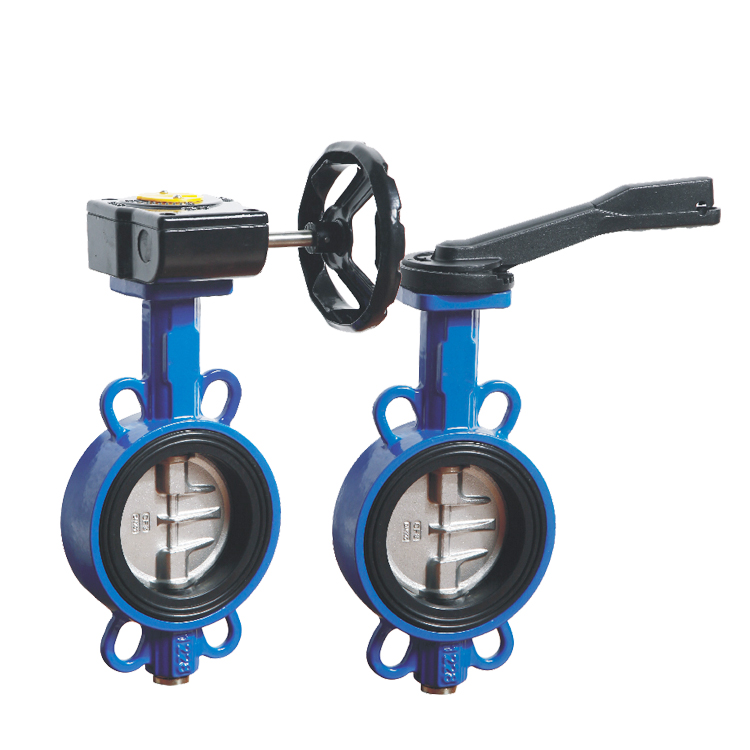
Factors influencing actuator selection
Factors influencing actuator selection are multifaceted and play a critical role in ensuring optimal performance, reliability, and compatibility with the intended application. Key factors to consider when choosing an actuator include the type of motion required (linear or rotary), force or torque needed, speed or response time, precision and accuracy, environmental conditions, energy source availability, and cost constraints. The type of motion dictates whether a linear or rotary actuator is more suitable for the specific application, such as controlling a sliding gate valve or a butterfly valve, respectively. Force or torque requirements depend on the load that the actuator must handle, which influences the size and power capacity of the chosen actuator.
Speed or response time considerations are vital in applications where rapid actuation is crucial for safety or efficiency, such as emergency shutdowns or high-speed assembly lines. Precision and accuracy requirements are essential in applications like robotics, process control, or positioning tasks, where tight tolerances and repeatability are critical for success. Environmental conditions, including temperature extremes, corrosive atmospheres, and potential exposure to moisture or dust, can significantly impact the durability and performance of an actuator, necessitating the selection of materials and designs that withstand these challenges.
Energy source availability plays a significant role in determining whether electric, pneumatic, or hydraulic actuators are more suitable, taking into account factors such as energy costs, infrastructure requirements, and system efficiency. Lastly, cost constraints should be considered, weighing the initial investment, installation, maintenance, and operational costs to determine the most cost-effective and reliable actuator solution for the given application. By carefully evaluating these factors, users can make informed decisions that contribute to the long-term success and efficiency of their systems and equipment.
Bearings and Bushings
Bearings and bushings are essential mechanical components that facilitate smooth, efficient motion by reducing friction and wear between moving parts in a wide array of machinery and equipment. These components support and guide rotating or sliding elements, such as shafts, gears, and wheels, enabling accurate positioning and improving overall performance and lifespan of the system. Bearings and bushings come in various designs, materials, and sizes to cater to diverse application requirements and operational environments, such as temperature extremes, corrosive atmospheres, and varying load capacities.
Bearings are typically categorized into two main types: rolling-element bearings and plain bearings. Rolling-element bearings, also known as anti-friction bearings, utilize balls or rollers to separate moving parts and minimize friction, offering high precision and load-carrying capacity. Common types of rolling-element bearings include ball bearings, roller bearings, and needle bearings, each providing unique benefits based on their construction and intended applications, such as automotive, aerospace, and industrial machinery. Plain bearings, also known as bushings or sleeve bearings, rely on the sliding motion between two surfaces, often employing lubrication or specialized materials to reduce friction and wear. Plain bearings are commonly used in applications where simplicity, low noise, and low maintenance requirements are critical, such as pumps, motors, and compressors.
Bushings, which are a subtype of plain bearings, come in various forms, including solid, split, or flanged designs, and can be made from a wide range of materials, such as bronze, brass, plastic, or composite materials. Material selection for bushings is crucial, as it directly impacts the performance, durability, and compatibility with the intended application. For instance, metal bushings offer excellent heat resistance and load-carrying capacity, while plastic or composite bushings provide lightweight, corrosion-resistant solutions for applications involving aggressive chemicals or moisture exposure.Understanding the different types of bearings and bushings, their respective properties, and suitable applications is vital for selecting the most appropriate components to ensure optimal performance, reliability, and longevity of machinery and equipment. Furthermore, proper installation, alignment, lubrication, and maintenance are crucial factors in maximizing the service life and efficiency of bearings and bushings, contributing to the overall success and cost-effectiveness of the system.
Description and function
A description and function of a component or system are integral aspects that facilitate a comprehensive understanding of its purpose, operation, and potential applications. The description provides an in-depth overview of the physical attributes, design, and materials used, while the function explains the intended role or purpose the component or system serves within a larger context. For instance, in the case of a gear, the description would cover aspects such as the gear type, material composition, size, and tooth profile, whereas the function would explain how the gear transmits mechanical power by meshing with other gears to alter torque, speed, or direction. By combining both the description and function, users can gain valuable insight into the suitability, compatibility, and performance expectations of a given component or system, enabling informed decision-making and efficient integration within the intended application. Additionally, understanding the description and function is vital for proper installation, operation, and maintenance, ensuring optimal performance and longevity of the component or system.
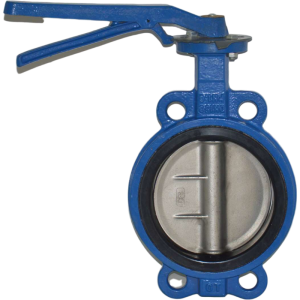
Material options and considerations
Material options and considerations play a crucial role in determining the performance, durability, and compatibility of components or systems within their intended application. Factors such as strength, weight, corrosion resistance, thermal properties, and cost must be carefully evaluated to select the most suitable material for the specific requirements and operational environments. For instance, metals like steel, aluminum, and titanium offer excellent strength and durability but differ in weight, corrosion resistance, and thermal properties, making them more appropriate for certain applications over others. Similarly, plastics and composites provide lightweight, corrosion-resistant solutions that are well-suited for applications involving aggressive chemicals, moisture exposure, or weight restrictions.
Apart from the inherent properties of the materials, additional treatments or coatings, such as anodizing, plating, or painting, can enhance the performance and longevity of components by providing improved wear resistance, corrosion protection, or aesthetic appeal. Material selection also has a significant impact on manufacturing processes, as certain materials may require specialized machining, forming, or joining techniques, which can influence production costs, lead times, and overall component quality. By carefully considering the material options and their respective properties, users can make informed decisions that contribute to the optimal performance, reliability, and lifespan of their components or systems, ultimately ensuring the success and cost-effectiveness of their projects.
Accessories and Additional Components
Accessories and additional components are vital elements that complement the primary components of a system or machinery, enhancing performance, functionality, and ease of operation. These supplementary parts can include items such as mounting brackets, connectors, adapters, seals, lubricants, sensors, and control devices, among others, which serve to facilitate installation, maintenance, and integration with other systems. The selection and compatibility of these accessories and additional components are crucial in ensuring optimal performance, reliability, and longevity of the overall system.For instance, mounting brackets provide secure attachment points for components like motors, actuators, or sensors, while connectors and adapters enable seamless integration with electrical, pneumatic, or hydraulic networks. Seals and gaskets play a critical role in preventing fluid leakage, maintaining internal pressure, and protecting components from environmental contaminants, such as dust, moisture, or chemicals. Lubricants are essential in reducing friction, wear, and heat generation between moving parts, consequently extending component life and improving efficiency.
Sensors and control devices enhance the functionality of a system by enabling real-time monitoring, feedback, and automation, ultimately contributing to improved safety, accuracy, and energy efficiency. Careful consideration should be given to factors such as material compatibility, environmental conditions, and load requirements when selecting these accessories and additional components, as they can significantly impact the performance and durability of the entire system.Moreover, proper installation, maintenance, and regular inspection of these supplementary parts are essential in preventing premature failure or unexpected downtime, ensuring the long-term success and cost-effectiveness of the system. By understanding the importance and roles of accessories and additional components, users can make informed decisions that contribute to the overall efficiency, reliability, and functionality of their equipment and projects.
Positioners
Positioners are integral components in control systems that ensure precise and accurate positioning of actuators, valves, or other mechanical devices based on a desired setpoint or input signal. Typically used in process control, automation, and robotics, positioners receive input signals from controllers, such as programmable logic controllers (PLCs) or distributed control systems (DCS), and convert them into mechanical motion by adjusting the actuator’s position accordingly. This enables the system to maintain optimal operating conditions, regulate flow rates, or achieve precise positioning tasks. Positioners can be pneumatic, hydraulic, or electric, depending on the energy source and actuator type they are designed to work with. They often incorporate feedback mechanisms, such as potentiometers or encoders, which continuously monitor the actual position and make necessary adjustments to minimize errors and maintain accurate control. By employing positioners in control systems, users can significantly improve process efficiency, stability, and repeatability, ultimately contributing to enhanced safety, product quality, and cost-effectiveness of their operations.
Limit switches
Limit switches are electromechanical devices that play a vital role in monitoring and controlling the movement of machinery, equipment, or processes by detecting the presence or position of an object within a predefined limit. These switches are designed to activate or deactivate electrical circuits when a moving part reaches a specified point, enabling functions like halting motion, initiating a change in direction, or triggering alarms for safety purposes. Commonly found in industrial automation, robotics, and material handling systems, limit switches come in various designs, such as plunger, lever, or roller types, and can be either mechanical or non-contact, utilizing inductive or capacitive sensing technology. The choice of limit switch type and configuration depends on factors like the required actuation force, sensitivity, environmental conditions, and mounting constraints. By incorporating limit switches into control systems, users can enhance safety, improve process efficiency, and prevent damage to equipment caused by overtravel or collisions, ultimately contributing to the reliability and longevity of their systems.
Solenoid valves
Solenoid valves are electromechanical devices that control the flow of fluids or gases in various applications by converting electrical energy into mechanical motion. These valves play a crucial role in automating and regulating fluid handling processes, such as controlling flow rates, pressure, or direction within industrial, commercial, and domestic systems. A solenoid valve typically consists of a coil and a plunger mechanism, wherein an electric current passing through the coil generates a magnetic field, causing the plunger to move and either open or close the valve. Solenoid valves can be classified as direct-acting, pilot-operated, or servo-assisted, with each type offering unique benefits based on factors like flow capacity, pressure range, and response time.
The selection of the appropriate solenoid valve depends on various considerations, including the type of fluid or gas being controlled, operating pressure and temperature, required flow rate, and the valve’s compatibility with the control system. Additionally, material selection for the valve body and seals, such as brass, stainless steel, or plastic, is crucial for ensuring reliable operation and longevity, particularly in corrosive or extreme temperature environments. By incorporating solenoid valves into fluid control systems, users can achieve precise, rapid, and efficient control of their processes, contributing to enhanced safety, product quality, and overall cost-effectiveness of their operations.
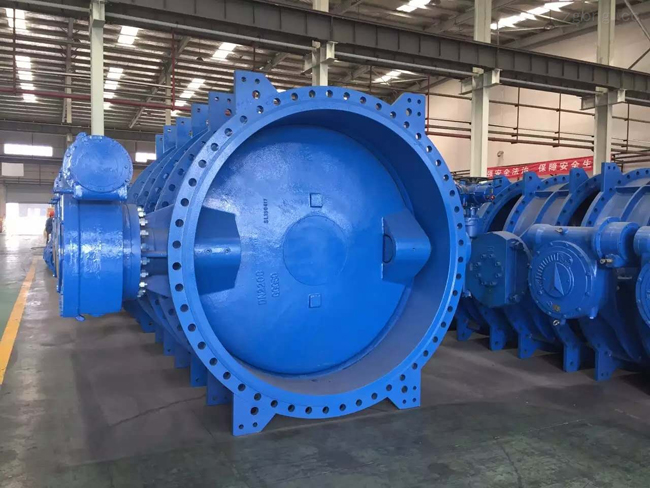
Manual overrides
Manual overrides are essential features in automated control systems that allow operators to bypass or temporarily disable the automated functions and gain direct control over a device or process in case of emergencies, maintenance activities, or unexpected system failures. These overrides can be found in various applications, such as actuators, valves, motor drives, and control panels, ensuring that critical operations can continue or be safely shut down when automated control is compromised or undesirable. Manual overrides often come in the form of physical switches, levers, or buttons that enable operators to quickly and intuitively intervene in the system’s operation. In some cases, manual overrides may also involve software-based controls that provide a higher level of flexibility and customization. Incorporating manual overrides in control systems not only enhances safety and reliability but also allows for easier troubleshooting and system diagnostics during maintenance or commissioning activities. By ensuring that manual overrides are readily accessible and clearly labeled, users can effectively minimize downtime, prevent potential damage to equipment, and maintain safe working conditions in various operational scenarios.
Conclusion
In conclusion, understanding the common names and functions of the major components of a butterfly valve is essential for anyone working with or maintaining these versatile flow control devices. Butterfly valves are widely employed in industries such as water treatment, chemical processing, and HVAC systems, owing to their efficient and reliable performance, compact design, and cost-effectiveness. The key components of a butterfly valve include the body, disc, stem, seat, and actuator, each playing a critical role in regulating fluid flow through the valve.
The valve body, typically made of materials like cast iron, stainless steel, or PVC, provides structural support and houses the other components. The disc, which can be flat or contoured, acts as the primary flow control element, rotating within the valve body to modulate the flow of fluid. The stem, connected to the disc, transfers the motion from the actuator to the disc, allowing for precise positioning. The seat, usually made of elastomeric materials, creates a tight seal between the disc and valve body, preventing leakage when the valve is closed. Lastly, the actuator, which may be manual, electric, pneumatic, or hydraulic, provides the necessary force to rotate the stem and disc, enabling the valve to open, close, or throttle the fluid flow as needed.
By familiarizing oneself with these common terms and their respective functions, users can better communicate with industry professionals, troubleshoot issues, and make informed decisions when selecting, operating, and maintaining butterfly valves. Additionally, understanding the importance of material compatibility, proper installation, and regular maintenance can further contribute to the valve’s longevity, safety, and overall performance. As a result, users can optimize their processes, reduce downtime, and ensure the efficient operation of their systems, ultimately contributing to the success and profitability of their projects.
Recap of the major components of butterfly valves
In recap, the major components of butterfly valves are essential in ensuring their efficient and reliable performance in various flow control applications. These key components include the valve body, which provides structural support; the disc, which serves as the primary flow control element; the stem, which transfers motion from the actuator to the disc; the seat, which creates a tight seal to prevent leakage; and the actuator, which supplies the necessary force for opening, closing, or throttling the fluid flow. Understanding the roles and functions of these components is crucial for selecting, operating, and maintaining butterfly valves, ultimately contributing to the optimization of processes, reduction of downtime, and overall success of flow control systems.
Importance of understanding these components for successful valve selection, installation, and maintenance
The importance of understanding the major components of butterfly valves cannot be overstated when it comes to successful valve selection, installation, and maintenance. A thorough knowledge of these components and their functions enables users to make informed decisions when choosing the most suitable valve for their specific application, taking into account factors such as material compatibility, pressure ratings, and flow control requirements. Moreover, a comprehensive understanding of the valve components ensures proper installation, as users can identify the correct orientation, positioning, and connection methods, minimizing the risk of leaks, malfunctions, or premature wear. Additionally, familiarity with these components is crucial for effective maintenance, as it allows users to recognize signs of wear, perform timely replacements, and troubleshoot issues more efficiently. Ultimately, understanding the major components of butterfly valves is key to optimizing system performance, enhancing safety, and maximizing the service life of these versatile flow control devices.
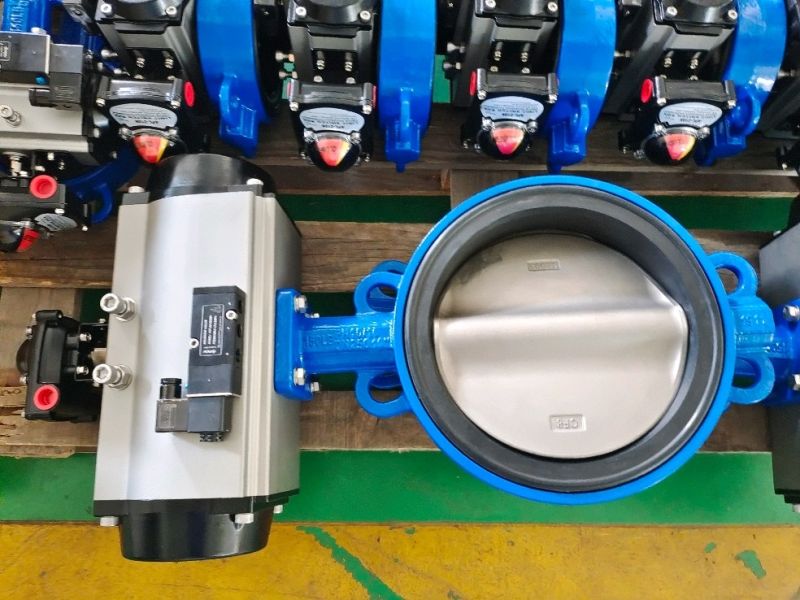
Encouragement to consult with professionals and follow best practices
It is highly encouraged to consult with experienced professionals and follow industry best practices when selecting, installing, and maintaining butterfly valves. By engaging with experts, users can gain valuable insights and recommendations tailored to their specific application requirements, ensuring that the chosen valve and its components are optimally suited for the task at hand. Professionals can also provide guidance on proper installation techniques, addressing potential challenges, and ensuring that the valve functions effectively and safely within the system. Furthermore, adhering to established best practices for maintenance, inspection, and troubleshooting can significantly contribute to the valve’s longevity and reliable performance. In essence, collaborating with knowledgeable professionals and adhering to industry standards not only enhances the overall efficiency and safety of flow control systems but also promotes continuous learning and improvement, ultimately leading to the successful operation and management of these critical components.


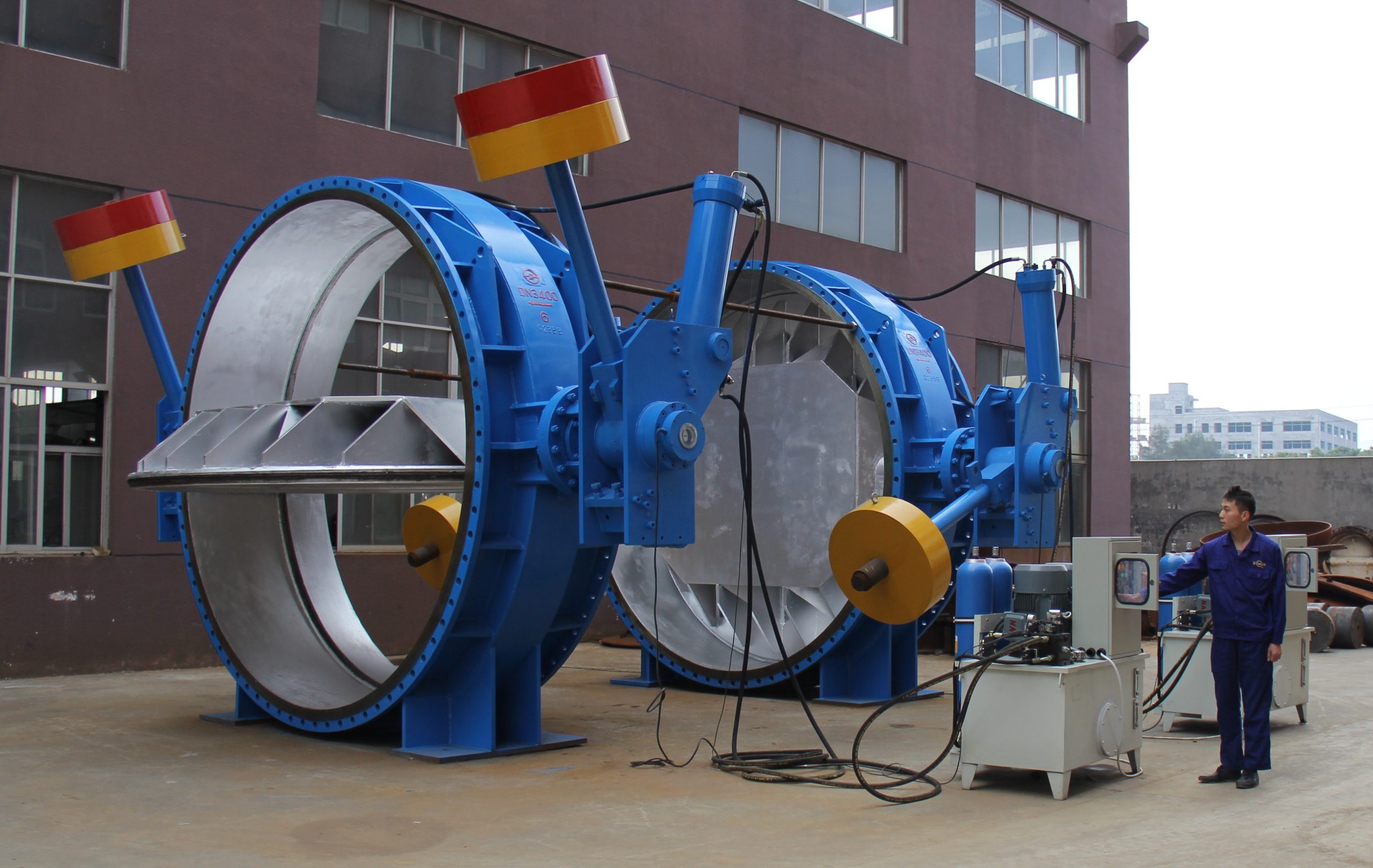
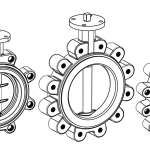
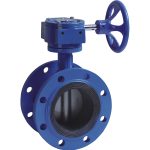
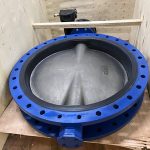
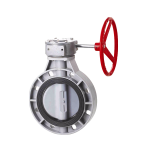
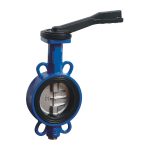
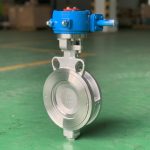
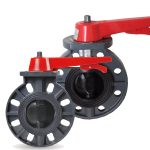

-370x270.jpg)
